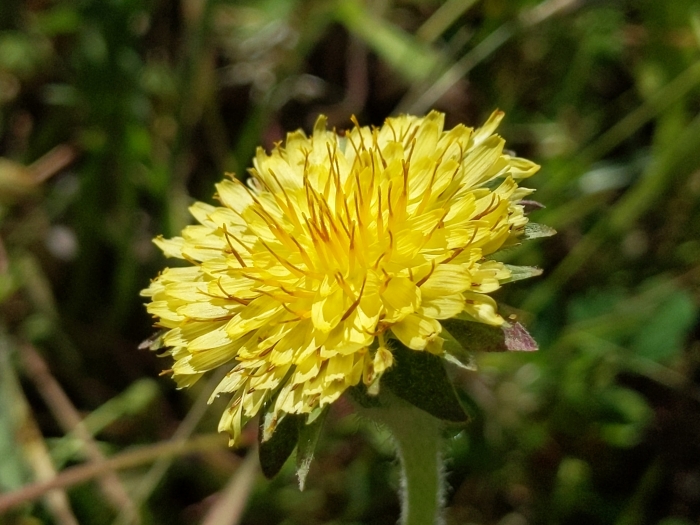California Dandelion
(Agoseris grandiflora)
California Dandelion (Agoseris grandiflora)
/
/

Ken-ichi Ueda
CC BY 4.0
Image By:
Ken-ichi Ueda
Recorded By:
Copyright:
CC BY 4.0
Copyright Notice:
Photo by: Ken-ichi Ueda | License Type: CC BY 4.0 | License URL: http://creativecommons.org/licenses/by/4.0/ | Rights Holder: Ken-ichi Ueda | Publisher: iNaturalist | Date Created: 2022-05-07T17:52:03Z |

























Estimated Native Range
Summary
Agoseris grandiflora, commonly known as California dandelion or bigflower agoseris, is a perennial herb native to the grasslands, meadows, and open forest clearings of western North America, from British Columbia to California and eastward to Utah. It typically forms a basal rosette of oblong leaves that can reach up to 20 inches in length, with the entire plant reaching a height of 12 to 35 inches (30 to 90 cm). The solitary flower head, which lacks a stem, is borne on a leafless, erect peduncle that can approach a meter in height and is covered in soft white hairs. The flower head is up to 2 inches wide with bright yellow ray florets that bloom from late spring to early summer. The fruit is an achene, nearly 1 inch long with a long beak and a tuft of hair (pappus) that aids in wind dispersal.
Bigflower agoseris is valued for its showy, dandelion-like flowers and its ability to thrive in a variety of conditions, making it a versatile choice for wildflower meadows, native plant gardens, and restoration projects. It is drought-tolerant once established and prefers well-drained soils in full sun to part shade. While it is not commonly afflicted by serious pests or diseases, overwatering or poor drainage can lead to root rot. This species is also appreciated for its role in supporting pollinators such as bees and butterflies.CC BY-SA 4.0
Bigflower agoseris is valued for its showy, dandelion-like flowers and its ability to thrive in a variety of conditions, making it a versatile choice for wildflower meadows, native plant gardens, and restoration projects. It is drought-tolerant once established and prefers well-drained soils in full sun to part shade. While it is not commonly afflicted by serious pests or diseases, overwatering or poor drainage can lead to root rot. This species is also appreciated for its role in supporting pollinators such as bees and butterflies.CC BY-SA 4.0
Plant Description
- Plant Type: Herb
- Height: 0.75-1.8 feet
- Width: 0.25-0.75 feet
- Growth Rate: Moderate
- Flower Color: Yellow
- Flowering Season: Spring, Summer, Fall
- Leaf Retention: Deciduous
Growth Requirements
- Sun: Full Sun, Part Shade
- Water: Medium
- Drainage: Fast, Medium, Slow
Common Uses
Bee Garden, Deer Resistant, Drought Tolerant, Low Maintenance
Natural Habitat
Native to grasslands, meadows, and open forest clearings in western North America
Other Names
Common Names: Largeflower Agoseris, Grand Agoseris, Puget Sound Agoseris, Bigflower Agoseris, Shortbeak Agoseris, Large-Flowered False-Dandelion, Large-Flowered Goat-Chicory
Scientific Names: , Agoseris grandiflora, Agoseris cinerea, Agoseris grandiflora var. intermedia, Agoseris grandiflora var. plebeia, Agoseris grandifolia var. intermedia, Agoseris intermedia, Agoseris marshallii, Agoseris marshallii, Agoseris plebeia
GBIF Accepted Name: